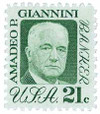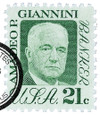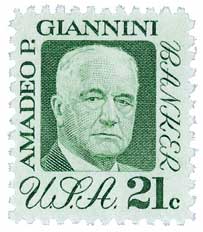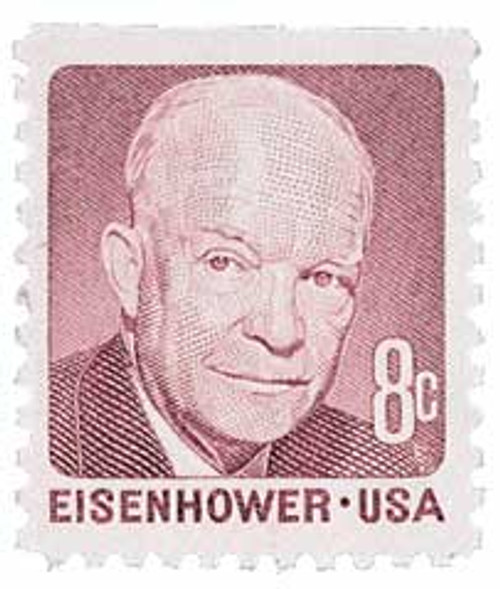
# 1400 - 1973 21c Amadeo P. Giannini
Birth of Amadeo Giannini
Giannini’s parents were Italian immigrants who had first come to the US in 1849 in response to the California Gold Rush. In 1872, the family moved to a 40-acre farm where they grew fruits and vegetables to sell.
Giannini went to Heald College, but decided that he would have more success in business than finishing school. So he dropped out in 1885 and got a full-time job as a produce broker. Giannini had significant success there and continued to thrive working as a commission merchant and produce dealer for several farms in the Santa Clara Valley.
Giannini retired from the produce business when he was 31, selling his interest to his employees. He then worked administering his father-in-law’s estate. This included working as director of the Columbus Savings and Loan. In that role, Giannini saw a chance to help the growing immigrant population that didn’t have a bank. The bank’s other directors didn’t agree with him and he chose to quit the board and start his own bank.
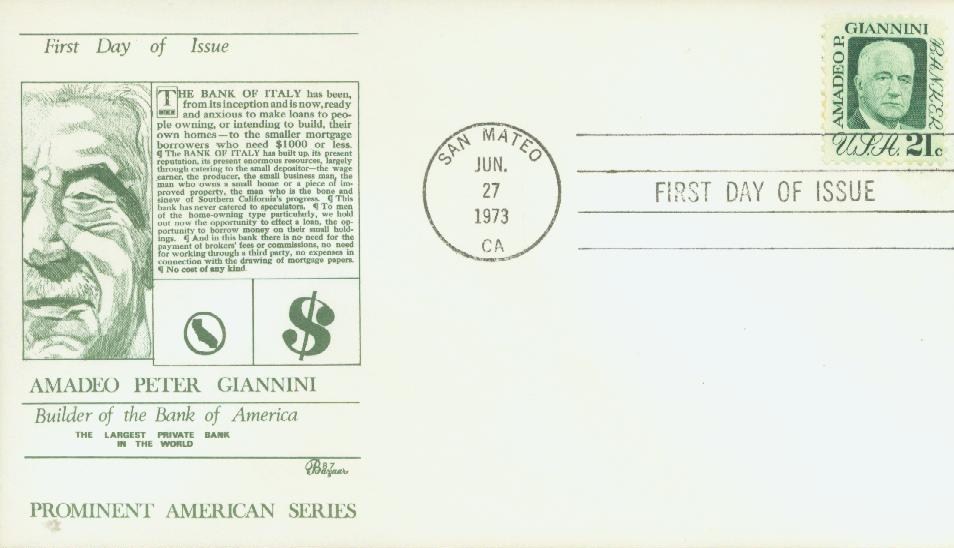
Giannini founded the Bank of Italy on October 17, 1904. Located in a former saloon in San Francisco, the bank would offer services to hardworking immigrants that were turned away from other banks. On that first day, deposits totaled $8,780. The following year, deposits reached over $700,000.
When an earthquake leveled much of San Francisco in 1906, Giannini continued to serve his community with a temporary bank – placing a wooden plank across two barrels in the street. He held firm that the city would rise from the ashes.
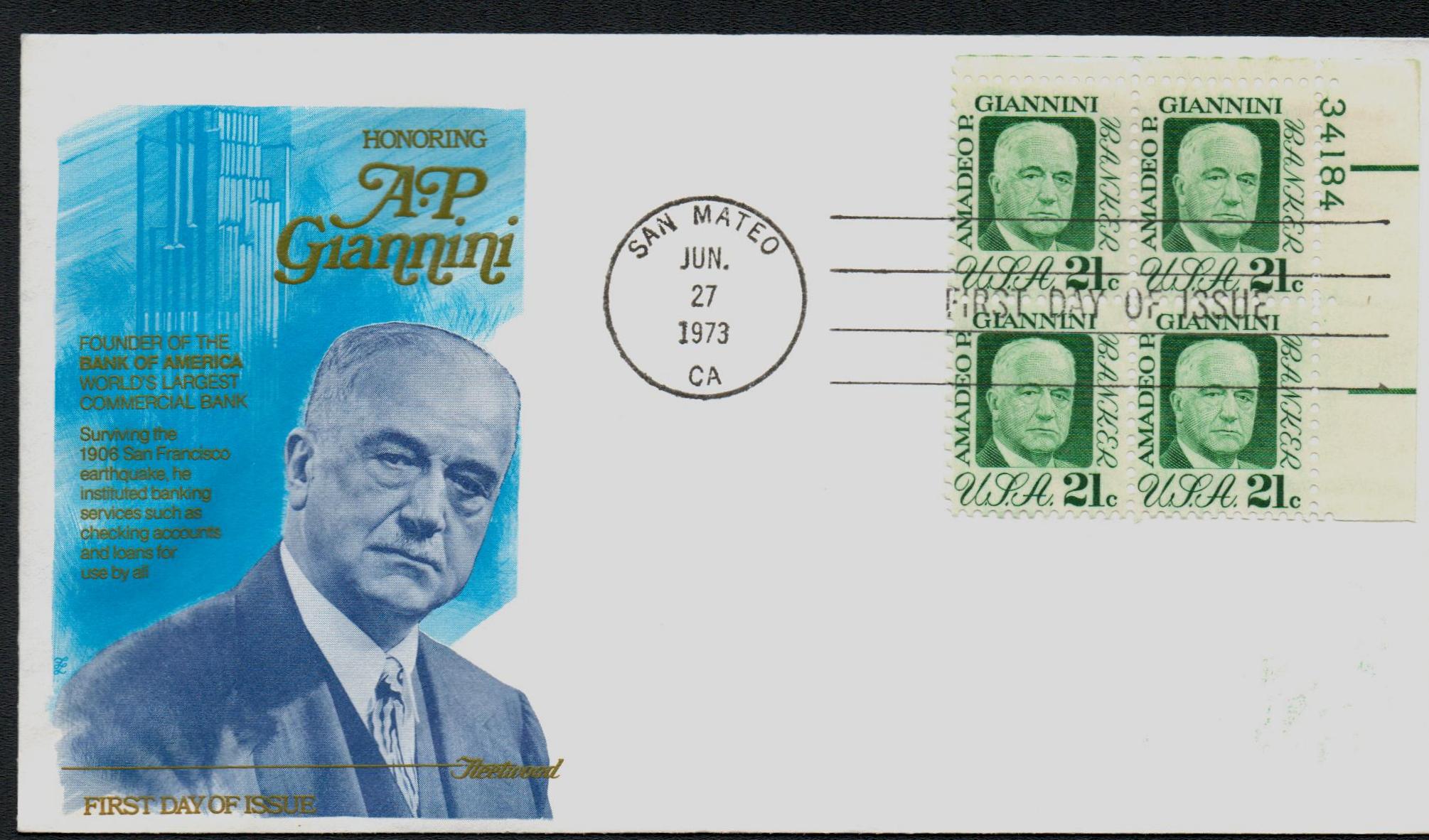
Giannini moved the money from the bank’s vault to his home outside of the fire zone. He did so by hiding it under garbage in garbage wagons. At the time, other banks feared opening their vaults because the fires had heated them up significantly and they feared that opening them would destroy their contents. So Giannini was one of just a few bankers that could provide loans during this period. He often made loans with simply a handshake and later recalled that every loan was repaid.
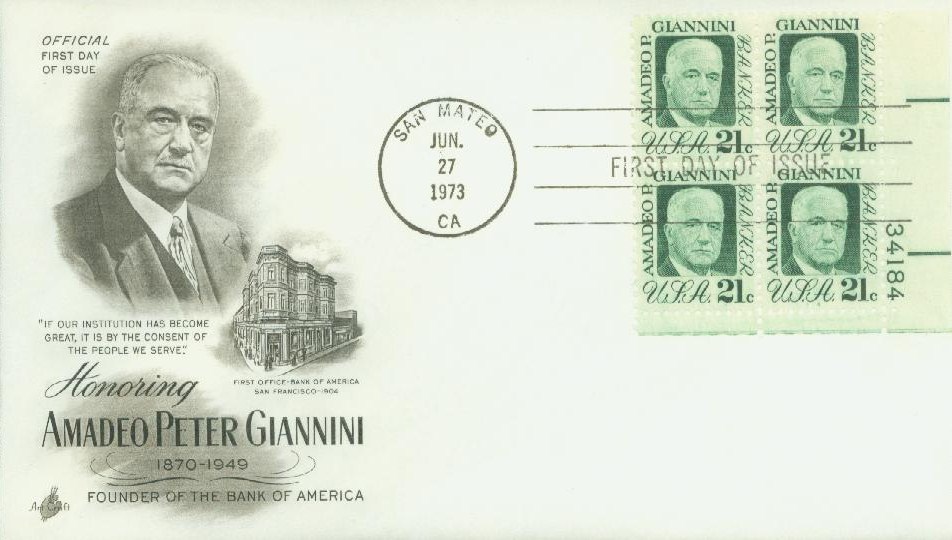
In 1909, California began to allow branch banking. Giannini was a big supporter of this, as he believed it helped stabilize banks and expand their capital base. He opened his first branch outside of San Francisco in 1909 and would eventually open several hundred more throughout the state. In 1928, Giannini merged his Bank of Italy with Bank of America.
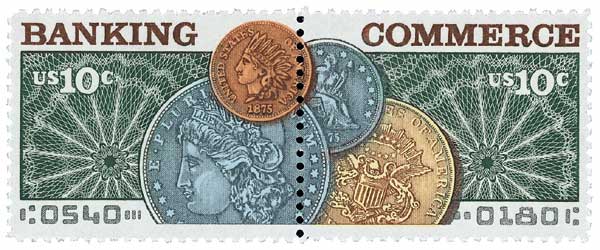
Giannini’s Bank of America loaned Walt Disney the money to produce Snow White, Disney’s first full-length animated motion picture. He also bought bonds that helped fund the construction of the Golden Gate Bridge during the Depression. During World War II he provided the financial backing for Henry Kaiser’s shipbuilding for the war effort. After the war, he visited Italy and offered loans to help rebuild factories.
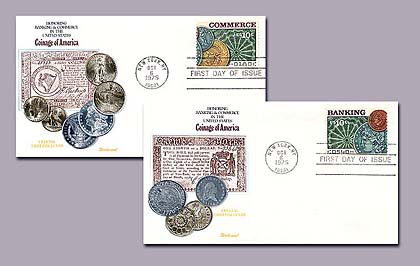
Giannini continued to run the bank until his death on June 3, 1949. He’s been honored in a number of ways, with several places named after him. These include a plaza in San Francisco, a school, and a college agricultural department. Time magazine also named him one of the “builders and titans” of the 20th century and he was the only banker on the list of 100 most important people of the century.
Birth of Amadeo Giannini
Giannini’s parents were Italian immigrants who had first come to the US in 1849 in response to the California Gold Rush. In 1872, the family moved to a 40-acre farm where they grew fruits and vegetables to sell.
Giannini went to Heald College, but decided that he would have more success in business than finishing school. So he dropped out in 1885 and got a full-time job as a produce broker. Giannini had significant success there and continued to thrive working as a commission merchant and produce dealer for several farms in the Santa Clara Valley.
Giannini retired from the produce business when he was 31, selling his interest to his employees. He then worked administering his father-in-law’s estate. This included working as director of the Columbus Savings and Loan. In that role, Giannini saw a chance to help the growing immigrant population that didn’t have a bank. The bank’s other directors didn’t agree with him and he chose to quit the board and start his own bank.

Giannini founded the Bank of Italy on October 17, 1904. Located in a former saloon in San Francisco, the bank would offer services to hardworking immigrants that were turned away from other banks. On that first day, deposits totaled $8,780. The following year, deposits reached over $700,000.
When an earthquake leveled much of San Francisco in 1906, Giannini continued to serve his community with a temporary bank – placing a wooden plank across two barrels in the street. He held firm that the city would rise from the ashes.

Giannini moved the money from the bank’s vault to his home outside of the fire zone. He did so by hiding it under garbage in garbage wagons. At the time, other banks feared opening their vaults because the fires had heated them up significantly and they feared that opening them would destroy their contents. So Giannini was one of just a few bankers that could provide loans during this period. He often made loans with simply a handshake and later recalled that every loan was repaid.

In 1909, California began to allow branch banking. Giannini was a big supporter of this, as he believed it helped stabilize banks and expand their capital base. He opened his first branch outside of San Francisco in 1909 and would eventually open several hundred more throughout the state. In 1928, Giannini merged his Bank of Italy with Bank of America.

Giannini’s Bank of America loaned Walt Disney the money to produce Snow White, Disney’s first full-length animated motion picture. He also bought bonds that helped fund the construction of the Golden Gate Bridge during the Depression. During World War II he provided the financial backing for Henry Kaiser’s shipbuilding for the war effort. After the war, he visited Italy and offered loans to help rebuild factories.

Giannini continued to run the bank until his death on June 3, 1949. He’s been honored in a number of ways, with several places named after him. These include a plaza in San Francisco, a school, and a college agricultural department. Time magazine also named him one of the “builders and titans” of the 20th century and he was the only banker on the list of 100 most important people of the century.







